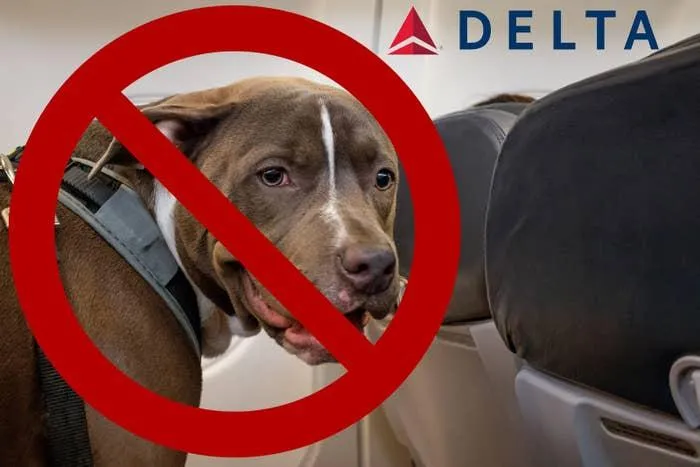Airlines That Permit Emotional Support Animals – Your Complete Guide
If you’re dependent on an emotional support animal (ESA) for your mental well-being while traveling, finding airlines that accept ESAs can seem challenging. This article provides a comprehensive overview of major U.S. carriers and their policies regarding ESAs. By the end, you’ll understand your options for flying with support critters.
Defining Emotional Support Animals
Before diving into airline policies, it’s important to distinguish ESAs from service animals. ESAs are prescribed by mental health professionals to assist those with disabilities, like anxiety, depression, PTSD and more. Unlike service animals trained for specific tasks, ESAs provide companionship and alleviate symptoms through their presence. Under the Air Carrier Access Act (ACAA), airlines must allow ESAs in the cabin at no extra charge.
Major Airlines Permitting ESAs
- Delta: Delta accepts written ESA documentation that’s less than one year old. Your animal must remain at your feet during the flight. No specific breeds are banned.
- United: United follows the same ESA documentation rules as Delta. Animals must stay at your feet on board. No banned breeds either.
- American: American asks for records from a licensed mental health professional stating your need for an ESA. Animals stay at your feet. Only prohibits snakes, other reptiles, ferrets, and any animal with tusks or horns.
- Alaska: Alaska mirrors other carriers with documentation requirements. Animals cannot occupy another seat and must stay where you can control them.
In general, the major airlines are quite ESA-friendly as long as proper paperwork is obtained. Most impose reasonable conditions like keeping critters at your feet for everyone’s comfort.
Lesser-Known Carriers with ESA Policies
Beyond the big four, here are a few other domestic airlines and their policies:

- JetBlue: JetBlue follows the ACAA guidance. Documentation must be less than one year old and fit requirements. Your ESA can sit in an airline-approved carrier under the seat in front of you.
- Allegiant: Allegiant accepts ESAs with documentation from a medical professional. The animal must remain at your feet or on your lap during boarding and flight.
- Frontier: Frontier allows ESAs without charge if proper documentation is presented upon check-in. Animals ride with you at your seat or foot area.
As you can see, smaller airlines like these also adhere to federal ESA regulations. Having paperwork in order opens the skies to your support animal on their flights too.
Documenting Your Need for an Emotional Support Animal
Now that you understand airline policies, how exactly do you obtain legitimate ESA documentation? Here are the basics:
- See a mental health professional such as a licensed therapist, psychiatrist or clinical social worker who has treated you for at least 6 months.
- Discuss how an ESA helps alleviate your specific disability or mental health condition through companionship and support.
- Request a formal letter drafted on their letterhead stating you have a disabilities as defined under the ACAA and require an ESA as an accommodation in dwellings and to fly.
- The letter must include their professional contact information and license number to verify authenticity with airlines when needed.
- Renew yearly if documentation will expire within 12 months for continued flying privileges with your ESA.
With legitimate paperwork clearly outlining your disability and need for a support animal, air travel with your ESA companion becomes straightforward across carriers. But documentation is key to avoid issues.
Handling ESA Regulations Like a Pro
Now that you know the travel ins and outs for ESAs by air, here are some additional tips to handle regulations smoothly:

- If possible, renew ESA documentation 3 months before expiration to avoid gaps in coverage. Otherwise the airline could require temporary housing for your animal.
- Review ESA policies for your specific airline regularly online or by phone. Policies do occasionally change.
- Notify airlines about flying with your ESA on all bookings by phone or noting it prominently online. This prevents unpleasant surprises at check-in.
- Train your ESA to behave appropriately in public. Avoid issues by keeping them leashed, potty trained and socialized for flying stress-free.
- Bring vaccination records in case the airline requests them. It shows your ESA is healthy and poses no risk to others.
With this knowledge, you’ll be empowered to confidently navigate ESA regulations when flying. With proper preparation, your therapy pet can easily join you on every trip.
What If an Airline denies Boarding of Your ESA?
Despite clear ESA documentation and eligibility, occasional mishaps may occur. Here are the steps to take if denied boarding:
- Politely inform the airline agent they are infringing on your legal rights under the ACAA and ask them to re-evaluate.
- Kindly yet firmly stand your ground that you have legitimate documentation and there is no reason for refusal.
- Request to speak to a manager if the agent remains uncooperative. Explain your protected status to a higher-up.
- Ask for their refusal in writing, along with the explanation provided, to document the incident.
- File a complaint with the DOT if the issue persists. The threat of an investigation often resolves the situation.
In summary, know your rights and don’t hesitate to assert them when enabled by law. With education and preparation, you can take full advantage of ESA rules on air travel.
I hope this guide has clarified airline policies surrounding emotional support animals. Please let me know if any other questions come up! With the right carrier and documentation, flying need not be stressful for those who rely on companion critters.

Airlines that Allow Emotional Support Animals
| Airline | Animal Allowed | Registration Required | Fees |
|---|---|---|---|
| American Airlines | Yes | Yes | $125 each way |
| United Airlines | Yes | Yes | $125 each way |
| Delta Airlines | Yes | Yes | $125 each way |
| Southwest Airlines | Yes | No | Free |
| Alaska Airlines | Yes | Yes | $125 each way |
FAQ
-
Which U.S. airlines permit ESAs?
Most big airlines in America basically allow emotional support animals. Delta, United, and American make it possible to travel with ESAs if you bring paperwork from your doctor or mental health pro. At the same time, they have some limits on what sort of animals are ok.
-
What paperwork do I need for an ESA?
To take your emotional support animal with you on a flight, you’ll need a letter from your physician or licensed therapist. The letter has to state that you have a mental health condition and your ESA provides emotional help. Make sure the letter contains all the important details! Without the proper forms, airlines will not let the animal go with you into the cabin.
-
Are there size or breed restrictions for ESAs?
It seems the major airlines set some limits based on size and breed for ESAs. Dogs and cats are typically the most accepted kinds of emotional support animals on planes. However, you may have trouble bringing super huge dogs or certain breeds like pit bulls or rottweilers that are sometimes banned. Airlines worry big animals will disturb other fliers. I guess they’ve got a point!

-
Do ESAs require any training?
Not exactly. On the one hand, emotional support animals are not trained to perform particular tasks like guide dogs for the blind. But on the other hand, the animals still need to be well-behaved in public to qualify for airplane cabin access. An ESA that misbehaves could potentially be denied from future flights. Keeping your pet well-socialized and obedient appears important to follow the rules.
-
What conditions can an ESA help with?
Mental health pros say emotional support animals can aid folks dealing with stuff like depression, anxiety, PTSD, autism – you name it. But is it worth it? Perhaps an ESA provides comfort mainly through affection and companionship rather than solving medical problems. I’m no expert, but caring for an animal buddy might relieve stress to some degree.
-
How has the ESA policy changed recently?
Due to concerns over some people faking the need for an ESA only to avoid pet fees, the DOT and airlines now crack down tougher on ESA paperwork. You must get documents from a long-term treatment provider, not just any doctor. Also, there’s talk airlines could ban certain species. However, persons with actual disabilities usually still receive access with the right forms in order.
